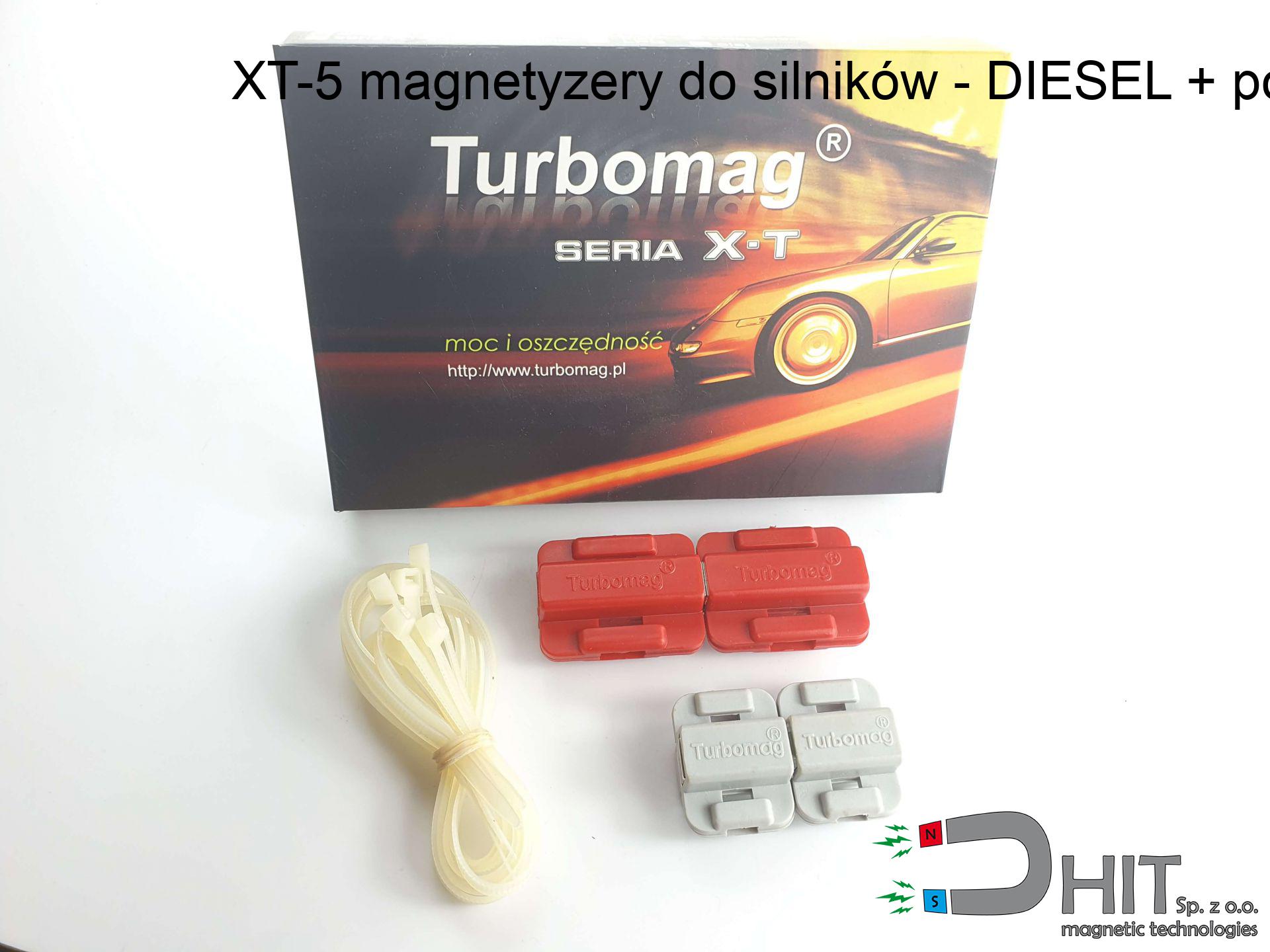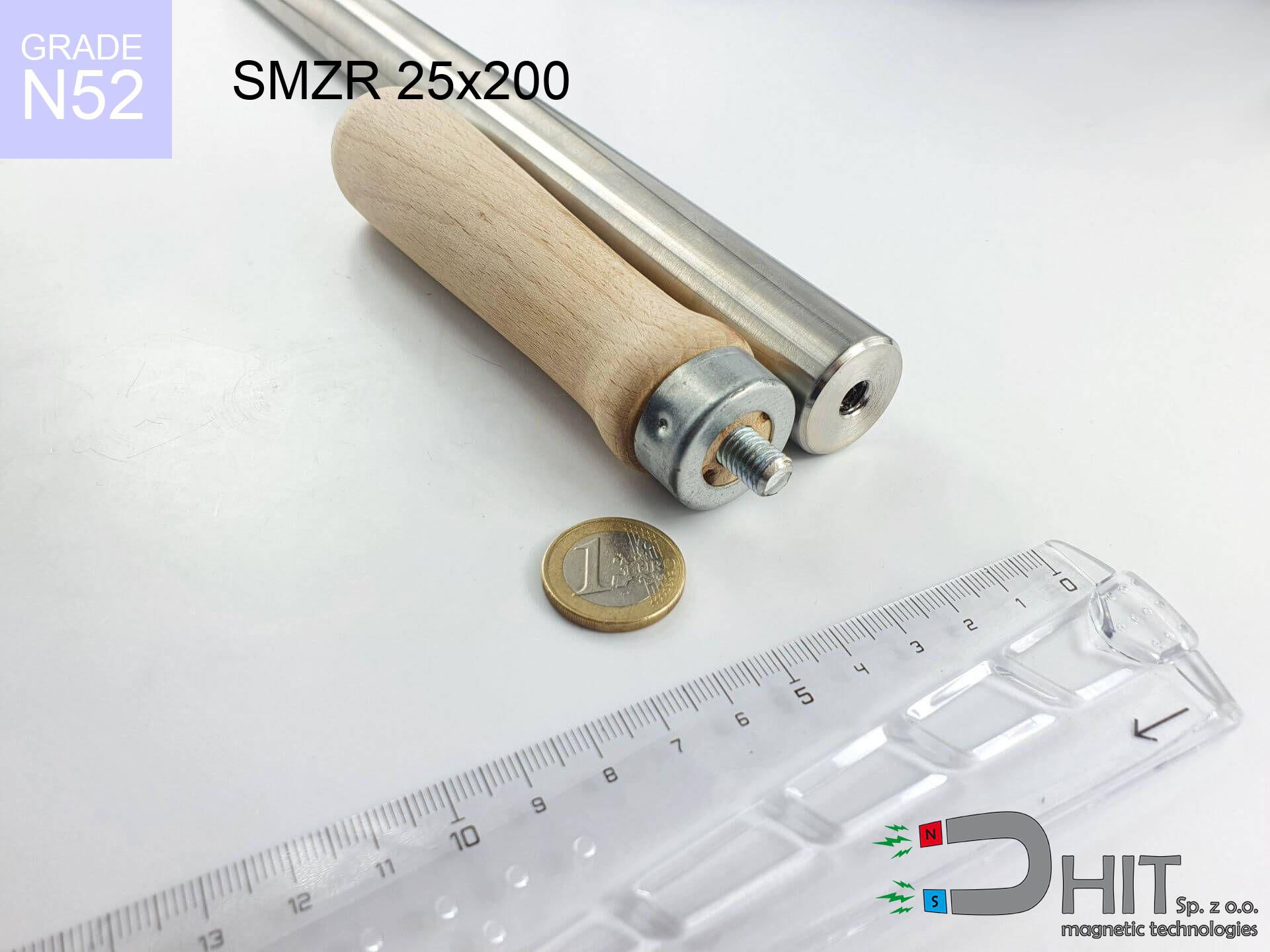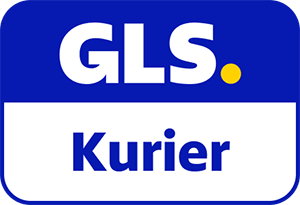SM 32x175 [2xM8] / N42 - magnetic separator
magnetic separator
Catalog no 130353
GTIN/EAN: 5906301813019
Diameter Ø
32 mm [±1 mm]
Height
175 mm [±1 mm]
Weight
940 g
Magnetic Flux
~ 8 000 Gauss [±5%]
528.90 ZŁ with VAT / pcs + price for transport
430.00 ZŁ net + 23% VAT / pcs
bulk discounts:
Need more?
Pick up the phone and ask
+48 22 499 98 98
otherwise get in touch by means of
request form
through our site.
Weight and structure of a neodymium magnet can be tested using our
magnetic mass calculator.
Orders placed before 14:00 will be shipped the same business day.
Technical of the product - SM 32x175 [2xM8] / N42 - magnetic separator
Specification / characteristics - SM 32x175 [2xM8] / N42 - magnetic separator
| properties | values |
|---|---|
| Cat. no. | 130353 |
| GTIN/EAN | 5906301813019 |
| Production/Distribution | Dhit sp. z o.o. |
| Country of origin | Poland / China / Germany |
| Customs code | 85059029 |
| Diameter Ø | 32 mm [±1 mm] |
| Height | 175 mm [±1 mm] |
| Weight | 940 g |
| Material Type | Stainless steel AISI 304 / A2 |
| Magnetic Flux | ~ 8 000 Gauss [±5%] |
| Size/Mount Quantity | 2xM8 |
| Polarity | circumferential - 6 poles |
| Casing Tube Thickness | 1 mm |
| Manufacturing Tolerance | ±1 mm |
Magnetic properties of material N42
| properties | values | units |
|---|---|---|
| remenance Br [min. - max.] ? | 12.9-13.2 | kGs |
| remenance Br [min. - max.] ? | 1290-1320 | mT |
| coercivity bHc ? | 10.8-12.0 | kOe |
| coercivity bHc ? | 860-955 | kA/m |
| actual internal force iHc | ≥ 12 | kOe |
| actual internal force iHc | ≥ 955 | kA/m |
| energy density [min. - max.] ? | 40-42 | BH max MGOe |
| energy density [min. - max.] ? | 318-334 | BH max KJ/m |
| max. temperature ? | ≤ 80 | °C |
Physical properties of sintered neodymium magnets Nd2Fe14B at 20°C
| properties | values | units |
|---|---|---|
| Vickers hardness | ≥550 | Hv |
| Density | ≥7.4 | g/cm3 |
| Curie Temperature TC | 312 - 380 | °C |
| Curie Temperature TF | 593 - 716 | °F |
| Specific resistance | 150 | μΩ⋅cm |
| Bending strength | 250 | MPa |
| Compressive strength | 1000~1100 | MPa |
| Thermal expansion parallel (∥) to orientation (M) | (3-4) x 10-6 | °C-1 |
| Thermal expansion perpendicular (⊥) to orientation (M) | -(1-3) x 10-6 | °C-1 |
| Young's modulus | 1.7 x 104 | kg/mm² |
Table 1: Rod construction
SM 32x175 [2xM8] / N42
| Parameter | Value | Description / Unit |
|---|---|---|
| Diameter (Ø) | 32 | mm |
| Total length | 175 | mm (L) |
| Active length | 139 | mm |
| Section count | 6 | modules |
| Dead zone | 36 | mm (2x 18mm starter) |
| Weight (est.) | ~1070 | g |
| Active area | 140 | cm² (Area) |
| Housing material | AISI 304 | 1.4301 (Inox) |
| Surface finish | Ra < 0.8 µm | Polished |
| Temp. class | 80°C | Standard (N) |
| Force loss (at max °C) | -12.8% | Reversible loss (physics) |
| Force (calculated) | 17.3 | kg (theor.) |
| Induction (surface) | ~6 500 | Gauss (Max) |
Chart 2: Field profile (6 sections)
Chart 3: Temperature performance
Chemical composition
| iron (Fe) | 64% – 68% |
| neodymium (Nd) | 29% – 32% |
| boron (B) | 1.1% – 1.2% |
| dysprosium (Dy) | 0.5% – 2.0% |
| coating (Ni-Cu-Ni) | < 0.05% |
Ecology and recycling (GPSR)
| recyclability (EoL) | 100% |
| recycled raw materials | ~10% (pre-cons) |
| carbon footprint | low / zredukowany |
| waste code (EWC) | 16 02 16 |
Other products
Advantages and disadvantages of rare earth magnets.
Benefits
- They do not lose magnetism, even during approximately 10 years – the reduction in lifting capacity is only ~1% (according to tests),
- They are extremely resistant to demagnetization induced by presence of other magnetic fields,
- Thanks to the shiny finish, the plating of Ni-Cu-Ni, gold-plated, or silver-plated gives an professional appearance,
- Magnetic induction on the surface of the magnet is impressive,
- Neodymium magnets are characterized by extremely high magnetic induction on the magnet surface and can work (depending on the shape) even at a temperature of 230°C or more...
- Considering the potential of flexible forming and adaptation to unique requirements, magnetic components can be manufactured in a wide range of forms and dimensions, which increases their versatility,
- Huge importance in electronics industry – they find application in mass storage devices, drive modules, medical devices, and industrial machines.
- Compactness – despite small sizes they provide effective action, making them ideal for precision applications
Disadvantages
- Brittleness is one of their disadvantages. Upon strong impact they can fracture. We advise keeping them in a special holder, which not only secures them against impacts but also raises their durability
- When exposed to high temperature, neodymium magnets experience a drop in power. Often, when the temperature exceeds 80°C, their power decreases (depending on the size and shape of the magnet). For those who need magnets for extreme conditions, we offer [AH] versions withstanding up to 230°C
- They oxidize in a humid environment - during use outdoors we suggest using waterproof magnets e.g. in rubber, plastic
- Limited possibility of producing threads in the magnet and complicated shapes - preferred is casing - magnetic holder.
- Potential hazard to health – tiny shards of magnets are risky, in case of ingestion, which becomes key in the context of child safety. Additionally, small components of these magnets can disrupt the diagnostic process medical after entering the body.
- With budget limitations the cost of neodymium magnets is a challenge,
Lifting parameters
Maximum lifting force for a neodymium magnet – what affects it?
- on a plate made of mild steel, perfectly concentrating the magnetic field
- whose transverse dimension is min. 10 mm
- with a surface cleaned and smooth
- with zero gap (no impurities)
- during pulling in a direction vertical to the plane
- in neutral thermal conditions
What influences lifting capacity in practice
- Space between surfaces – every millimeter of separation (caused e.g. by varnish or dirt) diminishes the pulling force, often by half at just 0.5 mm.
- Load vector – maximum parameter is obtained only during pulling at a 90° angle. The shear force of the magnet along the surface is typically several times lower (approx. 1/5 of the lifting capacity).
- Metal thickness – thin material does not allow full use of the magnet. Part of the magnetic field passes through the material instead of generating force.
- Material type – the best choice is high-permeability steel. Cast iron may attract less.
- Surface structure – the smoother and more polished the plate, the larger the contact zone and higher the lifting capacity. Roughness creates an air distance.
- Thermal conditions – NdFeB sinters have a sensitivity to temperature. At higher temperatures they are weaker, and at low temperatures gain strength (up to a certain limit).
Holding force was measured on the plate surface of 20 mm thickness, when the force acted perpendicularly, whereas under shearing force the holding force is lower. In addition, even a minimal clearance between the magnet and the plate decreases the lifting capacity.
H&S for magnets
Warning for allergy sufferers
Warning for allergy sufferers: The Ni-Cu-Ni coating contains nickel. If redness appears, immediately stop working with magnets and wear gloves.
Protect data
Powerful magnetic fields can corrupt files on credit cards, HDDs, and other magnetic media. Stay away of at least 10 cm.
GPS Danger
Navigation devices and mobile phones are highly susceptible to magnetism. Close proximity with a powerful NdFeB magnet can ruin the internal compass in your phone.
Conscious usage
Use magnets with awareness. Their immense force can surprise even experienced users. Stay alert and respect their power.
Bodily injuries
Big blocks can crush fingers instantly. Never put your hand betwixt two strong magnets.
Do not overheat magnets
Regular neodymium magnets (grade N) undergo demagnetization when the temperature exceeds 80°C. The loss of strength is permanent.
Warning for heart patients
Warning for patients: Powerful magnets affect electronics. Keep at least 30 cm distance or ask another person to work with the magnets.
Shattering risk
NdFeB magnets are sintered ceramics, meaning they are very brittle. Impact of two magnets will cause them cracking into small pieces.
Flammability
Powder generated during grinding of magnets is flammable. Avoid drilling into magnets unless you are an expert.
Swallowing risk
Absolutely keep magnets out of reach of children. Risk of swallowing is significant, and the consequences of magnets clamping inside the body are fatal.

![Separation magnetic rod SM 32x175 [2xM8] / N42 Separation magnetic rod SM 32x175 [2xM8] / N42](https://cdn3.dhit.pl/graphics/banners/magnet.webp)
![SM 32x175 [2xM8] / N42 - magnetic separator](https://cdn3.dhit.pl/graphics/products/sm-32x175-2xm8-tej.jpg)





